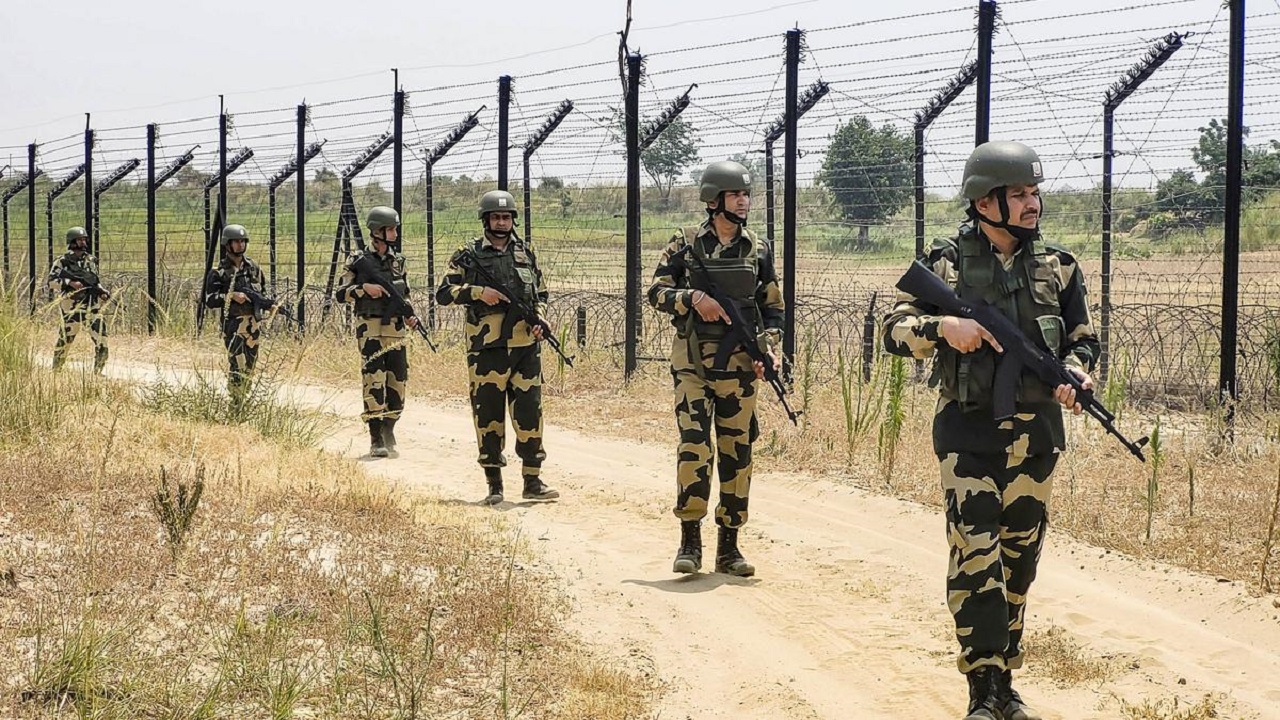Border Security in Focus: Overcoming Cross-Border Infiltration Challenges
Context: Following the Pahalgam terror attack, which resulted in the tragic loss of 26 tourists, the focus has shifted to strengthening India’s counter-infiltration grid along the Pakistan border. This incident has emphasized the urgency of enhancing the security apparatus in Jammu & Kashmir, especially in the light of increasing cross-border infiltration and its implications for national security.
About Cross-Border Infiltration:
Cross-border infiltration refers to the illegal entry of armed militants from neighboring countries, primarily Pakistan, into Indian territory to carry out terror activities. This remains a significant challenge for India's internal security.
-
Regions Affected: The infiltration primarily impacts Jammu & Kashmir, especially regions like Pir Panjal, Poonch, Rajouri, Kathua, Doda, and areas like Pahalgam.
Reasons Behind Cross-Border Infiltration:
Several factors contribute to the persistent problem of cross-border infiltration, which poses a threat to national security.
-
Porous Terrain: The rugged mountains and dense forests, particularly in the Pir Panjal range, provide a natural corridor for militants to cross undetected.
-
Seasonal Factors: The harsh winter conditions cause damage to the border fencing, leading to gaps in security. This allows militants to exploit vulnerabilities.
-
Stealth Tactics: Terrorists use advanced encrypted communication technologies, minimizing local contact and reducing the chances of detection.
-
External Support: Cross-border infiltration is exacerbated by the active backing of terror groups operating from Pakistan, which facilitates the smuggling of weapons and fighters into India.
Government Steps Taken:
In response to the growing threat of infiltration, the Indian government has implemented several security measures aimed at strengthening border security.
-
Border Fencing: The construction of border fences began after the 2003 ceasefire agreement, and by 2010, the infiltration success rate had been reduced to around 20% of attempted infiltrations.
-
Comprehensive Integrated Border Management System (CIBMS): The CIBMS incorporates thermal imagers, radars, ground sensors, and aerial surveillance (e.g., aerostats) to enhance border security and monitor infiltration attempts.
-
Smart Fencing: India is working on a smart fencing system that can detect breaches and send alerts automatically, reducing the reliance on human observation.
-
Deployment of Additional Forces: A heavy troop presence has been maintained along the Line of Control (LoC), equipped with night vision technology and rapid repair teams to address security gaps quickly.
Challenges to Counter Cross-Border Infiltration:
Despite the ongoing efforts to curb cross-border infiltration, several challenges continue to hinder the effectiveness of counter-infiltration measures.
-
Harsh Climate: Heavy snowfall damages nearly one-third of the border fencing every year, leading to temporary gaps in the security grid.
-
Technology Constraints: While technologies like night vision devices are helpful, they have limited operational hours and are often impeded by power supply issues in remote areas.
-
Human Fatigue: The extreme cold and difficult terrain in border areas lead to physical exhaustion and reduced alertness among security personnel, further compromising border security.
-
Delayed Infrastructure Modernization: The comprehensive sealing of the India-Pakistan border, initially targeted for completion in 2018, is now expected to be completed by 2025 due to delays in infrastructure development.
Way Ahead:
To improve the counter-infiltration measures, India needs to focus on strengthening its existing systems and addressing the challenges.
-
Smart Fence Technology: The deployment of advanced smart fences that are capable of withstanding extreme weather and detecting breaches in real time is crucial.
-
Improved Aerial Surveillance: The use of drones and aerostats for continuous, real-time monitoring of sensitive areas along the border should be expanded.
-
Rapid Repair Teams: Establishing specialized teams to quickly repair damaged fencing, especially after snowstorms, will help reduce security gaps.
-
Enhanced Border Patrol Training: Equipping soldiers with state-of-the-art surveillance equipment and specialized skills for mountain warfare will enhance their ability to function effectively in challenging terrain.
-
Strategic Investments: Sufficient budget allocation and timely investments are required for upgrading border surveillance infrastructure and ensuring the resilience of border posts.
Conclusion:
Countering cross-border infiltration is a critical element of ensuring India’s national security. Strengthening border defenses, employing smarter surveillance systems, and investing in specialized training for security forces are key to preventing future infiltration attempts and ensuring peace in border regions. Enhanced efforts in counter-infiltration are essential for safeguarding India’s sovereignty and maintaining security in sensitive areas such as Jammu & Kashmir.



1.png)
Comments (0)